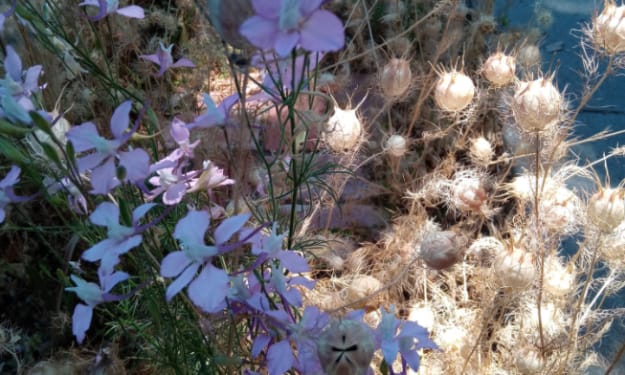Flowers for the People
The gift that never dies

My introduction to social change was a subtle one, more specifically stumbling across the book "Design for the Real World: Human Ecology and Social Change" by Vincent Papaneck in a local used book store when I was 15. For the first time in my life, I felt like there was a certain amount of social change that was within my capacity. Coming from a working class background, I felt removed from the creative students who had access to the technology that allowed them to create digital images, build 3D models, as well as the classes, background, and instruction that allowed them to hone in on those skills. "Design for the Real World" provided a practical guide to material minimalism and rethinking design and generative practices in a way that also catered to human needs. And for the first time, I had been introduced to design and creative means of practice that didn’t glorify excess or destruction for its own sake. Previously, I believed that design and generative practices were only possible through ceaseless and rapid production of “new” goods and that a “trade-off” needed to be made between the creation of “new” things, the majority of people living “well”, and being able to maintain a livable environment free of exploitative competition.
I realized, if degrowth was the ultimate goal of both practical and human centered design- it was empowering to know that my experience was valid and potential could be realized through human-centered action as an act of design. Fast forward a few years later, where time and travel taught me that I was not alone in wanting to create outside of the conditions I was taught. A trip through Papanek’s home country of Austria as well as Hungary and Italy showed me some of the most impactful methods of design implemented new theories, human psychology, and meeting human needs with a lens of historical context. Unlike many of the craftspeople and workers I had come across in the U.S., seemingly everyone I came across in these countries - from the craftspeople selling their items on the street to the professional artists- took pride in themselves and their work regardless of the price tag it carried. I had a sense they knew their work had value because they saw themselves as a member of their social, material, and political ecosystem; that at the end of the day they were a valued member of their society and that by extension their work carried the same significance.
I came to the conclusion that in the culture I came from, so much of our sense of alienation, disenfranchisement in the social sphere, and hopelessness was frequently tied to our material and economic constraints. How could we participate meaningfully in society without the tools of the “coolest”, “greatest”, or those otherwise deemed the “best” in their trade or goals when we are expected to buy into them as the only valid means of expression. How could we just “be” or express “ourselves” when we are consistently taught to aspire to be someone else? How could we be honest and sincerely creative while catering to the needs of commercial demand and not take into account the cost of human time, the environmental impact, and social trade-offs of such practices? Essentially, our cheapness is quite expensive in the long run.
Majoring design was fundamentally a disappointment as critiquing consumer culture and experimenting with theory was considered pasé, hippie nonsense, unrealistic, and fundamentally uncouth to the milieu of “design culture”. This was particularly true coming from a poor and marginalized person who could barely grasp some of the more advanced design skills. Consequently, I found many subtle ways to fight back. I thought back to one of my more beloved experiences traveling in Hungary. Part of what made the experience special was seeing street vendors selling lavender and handmade wreaths. These weren’t the generic wreaths you’d see at the craft store. Each one was special and looked like a unique work of art as if each vendor had seemingly mastered not violating the integrity of their own expression. I attempted to recreate the sentiment I felt at the time by making my own bouquets and giving them to people close to me. Now, whenever I can, I give those I care for bouquets to brighten their day because - I like to think- I’m not just giving them a gift, but a memory. It’s very easy to forget the time when someone gave you a plastic chachki, but you never forget when someone gives you flowers.
About the Creator
Janelle A. Monroy
Artist
Creator
Queer
Educator
Advocate
Student
Cat Addict






Comments
There are no comments for this story
Be the first to respond and start the conversation.